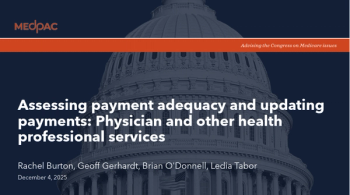
- March 25, 2019 edition
- Volume 96
- Issue 6
Debt: How much is too much?
Four signs that a physician may already owe too much
For many physicians, living with debt is an integral part of their training; but few learn how to manage it once their “real” paychecks begin rolling in.
In fact, many physicians continue to dig themselves deeper into debt as their careers progress, says Cory S. Fawcett, MD, a personal finance coach and author. “As can happen to anyone, physicians often just become totally numb to the consequences of debt,” says Fawcett.
“We end up feeling like it’s Monopoly money,” agrees James M. Dahle, MD, editor and founder of the White Coat Investor LLC. “We owe so much money, what’s a little bit more?”
Here are four signs that a physician may already owe too much:
1/ Not knowing how much is owed
“You would be surprised by how many physicians there are who have not sat down and written out what they owe altogether-because it’s terrifying,” Dahle says. “But you can’t formulate a plan until you know what you’re up against.”
Once a physician musters the courage to analyze his or her problem, he or she can create a budget and work toward resolving the debt.
“The word ‘budget’ can be difficult for some people,” Fawcett says. “But you have a limited amount of income. You already have a restriction on the amount you want to spend. So why not be in charge of the restriction by being proactive-not reactive-about what you want to spend?”
2/ Living paycheck to paycheck
As a result of a mentality in which debt is the norm, it’s not unusual for established physicians to live paycheck to paycheck-albeit with larger checks than the average American, says Fawcett.
“Just because your income jumped to $260,000 a year doesn’t mean you have to spend it all this month,” he says. For new residents coming out of training, he recommends they live on roughly $60,000 a year until their finances catch up.
A key danger of depending on one’s entire income every month, he adds, is that there is no cushion to protect the physician from loss of income due to job loss, illness, or maternity leave.
3/ Paying with plastic
Physicians’ financial problems can be compounded by a societal expectation that conflates practicing medicine with wealth.
Thus, physicians can easily fall prey to misconceptions such as, “I’m a doctor. I can afford it,” or “I work hard. I deserve a nice car and vacations,” says Gail L. Clifford, MD, an internist in Phoenix, Ariz.
In reality, these purchases are premature if they need to be bought with credit cards.
“Physicians are just like everybody else, and we all want to have stuff before we can actually afford to do it,” says Dahle, who recommends that physicians avoid taking on any debt besides student loans and a mortgage.
4/ Unclear goals
When physicians are fuzzy on what they owe or what standard of living they can afford, it’s nearly impossible to plan for the future. Specific, individual financial goals can help physicians ascend from a rut, says Fawcett.
Whether that goal is to buy a new home, retire at a certain age, or live debt-free, you can make a plan to get there. “Once you see where you are and where you want to go, you can plot out a map to get there. Following it isn’t as hard as you’d think,” he says.
Debra A. Schute is a contributing author. Send your financial questions to [email protected].
Articles in this issue
over 5 years ago
6 ways to put your patient portal to better useover 6 years ago
Not sure what to do about long patient wait times?over 6 years ago
Recruiting and retaining young physiciansover 6 years ago
Hiring clinical staffover 6 years ago
Mastering revenue cycle managementover 6 years ago
To consult or not consultover 6 years ago
Get paid for using the patient portalabout 7 years ago
Improve patient billing experience for a better bottom lineNewsletter
Stay informed and empowered with Medical Economics enewsletter, delivering expert insights, financial strategies, practice management tips and technology trends — tailored for today’s physicians.
















